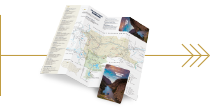Notes from the Road: A Newbie’s Guide to Cross-Country Skiing

Until two weeks ago, I had never cross-country skied. Admittedly, my upbringing was not one of family camping trips and cross-country drives through national parks. In fact, I grew up in the mid-Atlantic, with a family of Italians, whose idea of outdoor adventure was playing bocce in the backyard.
So, when my born-and-bred-in-the-West neighbor asked me if I wanted to go cross-country skiing after our first big snowfall-that-stuck, I knew that in order to shed my mid-Atlantic cocoon and become the Mountain West butterfly I always knew I was meant to be, I had to say, "Yes."
Never mind the fact that I didn’t own cross-country skis.
Or boots.
Or have any idea how I was going to slide down a mountain on toothpicks, let alone climb up one. But I was determined to seem somewhat competent out on the snow, so after I hung up the phone, I got busy.
Step One: Do Some Research
As with so many other important milestones in my life, my quest to learn the hidden ways of the cross-country ski warrior began with YouTube. Not only did I learn that there are multiple types of cross-country boots, bindings and ski setups, I also spent the ensuing two hours post-YouTube video online shopping for a ski onesie.
Step Two: Get Geared Up
Three hours of online shopping and YouTube watching later, I skipped to my local gear shop to get the skinny on what I would need for a morning ski. The best thing about living and playing in Yellowstone Country is that the guys and gals at the shop knew exactly I what I needed, right down to the best kind of skis to rent for the particular trail we were skiing. After trying on a few different boot sizes and getting a tutorial on how to step in and out of my skis, I walked away with a complete rental set and without a headache. I was in and out in thirty minutes.
Step Three: Find a Mentor
Outfitted and having devoured a virtual textbook of cross-country skiing knowledge, my ski companion and I headed out on a local hiking trail to get a good sweat on and test out my skiing prowess.
I’m going to be honest: cross-country skiing is a bit awkward at first. If you do it wrong (like I did initially), it feels like hiking with planks attached to your feet. My partner encouraged me to act more like I was gliding across the snow. It took most of the morning to practice, but by the end, the glide came more naturally.
Of course, as with any outdoor activity, there was a pretty steep learning curve. There was a good amount of falling, lung-burning and some dangerously cold fingers. I almost tumbled off the trail. My ski boot froze onto my binding, so I had to half walk, half ski to the car. Fair warning: Be ye not as uninformed as I on your first cross-country ski run.
Step Four: Learn By Doing
Like I said: steep learning curve. Here is what I learned in just a 2-hour foray into the world of cross-country skiing.
1. No matter how warmly you dress, eight degrees is still eight degrees. Dress warm to start, but be prepared to take layers off as you get going.
2. Repeat after me: Just because there’s snow on the ground does not mean you cannot get sunburned. Lesson learned.
3. Climbing uphill is more about form than power. Work on the glide for a bit on flat ground before you start any climbs.
4. Hair can, in fact, freeze (who knew?).
5. When you fall, your skis do not pop off, making getting up with cross-country skis on akin to a baby deer taking its first steps.
6. You will likely be really, really slow. Go with a patient friend or a fellow out-of-towner. Avoid going with a competitive cross-country skier.
7. Don’t overdo it. If you really like the sport, you’ll have plenty of opportunity to do it again, since cross-country skiing can be done practically anywhere that there’s snow. Don’t go out so hard on your first venture or you might injure some major muscles (primarily your hip flexors, which are integral in cross-country skiing).
8. There is no slowing down once you’ve committed to the downhill. Admittedly, I still don’t really know how to stop or even slow down. Practice snowplowing and have faith that the snow will catch you if you need to fall.
Have any of you cross-country skied? Leave tips and advice in the comments below (especially on how to stop).


